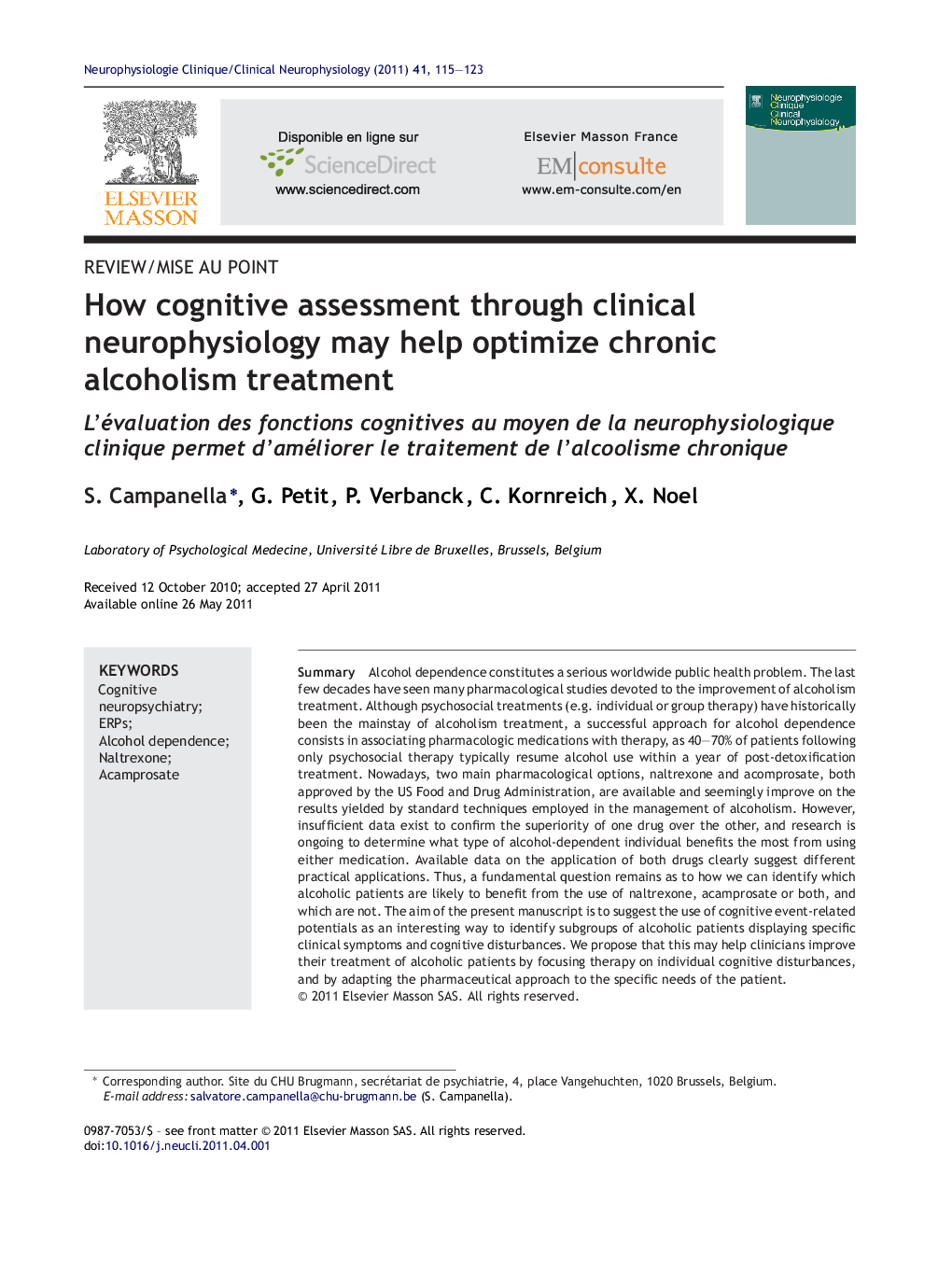| Article ID | Journal | Published Year | Pages | File Type |
|---|---|---|---|---|
| 3082660 | Neurophysiologie Clinique/Clinical Neurophysiology | 2011 | 9 Pages |
SummaryAlcohol dependence constitutes a serious worldwide public health problem. The last few decades have seen many pharmacological studies devoted to the improvement of alcoholism treatment. Although psychosocial treatments (e.g. individual or group therapy) have historically been the mainstay of alcoholism treatment, a successful approach for alcohol dependence consists in associating pharmacologic medications with therapy, as 40–70% of patients following only psychosocial therapy typically resume alcohol use within a year of post-detoxification treatment. Nowadays, two main pharmacological options, naltrexone and acomprosate, both approved by the US Food and Drug Administration, are available and seemingly improve on the results yielded by standard techniques employed in the management of alcoholism. However, insufficient data exist to confirm the superiority of one drug over the other, and research is ongoing to determine what type of alcohol-dependent individual benefits the most from using either medication. Available data on the application of both drugs clearly suggest different practical applications. Thus, a fundamental question remains as to how we can identify which alcoholic patients are likely to benefit from the use of naltrexone, acamprosate or both, and which are not. The aim of the present manuscript is to suggest the use of cognitive event-related potentials as an interesting way to identify subgroups of alcoholic patients displaying specific clinical symptoms and cognitive disturbances. We propose that this may help clinicians improve their treatment of alcoholic patients by focusing therapy on individual cognitive disturbances, and by adapting the pharmaceutical approach to the specific needs of the patient.
RésuméLa dépendance à l’alcool représente un problème de santé publique majeur. Il n’est dès lors pas étonnant que de nombreuses études pharmacologiques aient été dévolues à la recherche d’un traitement adapté à cette pathologie. L’approche classiquement utilisée de nos jours consiste à combiner une approche psychosociale (psychothérapie individuelle ou de groupe) à un traitement médicamenteux, étant donné que 40 à 70 % des patients ne suivant qu’une thérapie rechutent dans l’année suivant leur cure de désintoxication. Actuellement, deux molécules reconnues par l’Agence américaine des médicaments, la naltrexone et l’acamprosate, semblent améliorer les résultats obtenus par rapport aux psychothérapies seules dans la prévention de la rechute de ces patients. Pourtant, une question fondamentale demeure sans réponse : il nous est toujours impossible de dire quel(s) type(s) de patients alcooliques bénéficieront le plus de l’utilisation d’une molécule par rapport à l’autre. De plus, les données recueillies, à ce jour, semblent suggérer une application « pratique » différente de la naltrexone et de l’acamprosate. Dès lors, l’objectif du présent article consiste à suggérer une méthode basée sur le recueil de potentiels évoqués cognitifs, pouvant amener les cliniciens à constituer, sur base de troubles cliniques comportementaux associés à des troubles neurocognitifs spécifiques, des sous-groupes de patients dépendants à l’alcool. La constitution de ces sous-groupes aurait comme objectif principal d’adapter la rééducation cognitive du patient à ses déficits cognitifs propres et de fournir au patient une approche médicamenteuse (naltrexone seul, acamprosate seul ou naltrexone et acamprosate combinés) adaptée à ses besoins individuels.
